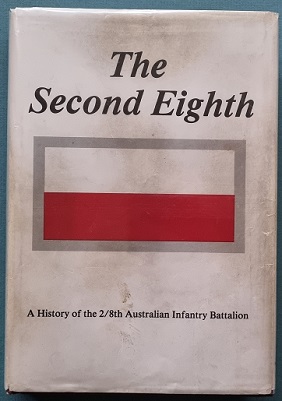Description
Title: Always Faithful – The History of the 49th Battalion
Author: Cranston, Fred
Condition: Very Good Plus
Edition: 1st Edition
Publication Date: 1983
ISBN: 0908175604
Cover: Hard Cover without Dust Jacket – 243 pages
Comments: The history of the 49th Battalion AIF during World War 1 and World War 2.
The 49th Battalion was raised in Egypt on 27 February 1916 as part of the “doubling” of the AIF. Approximately half of its recruits were Gallipoli veterans from the 9th Battalion, and the other half, fresh reinforcements from Australia. Reflecting the composition of the 9th, the 49th was predominantly composed of men from Queensland. The battalion became part of the 13th Brigade of the 4th Australian Division.
Arriving in France on 12 June 1916, the 49th moved into the trenches of the Western Front for the first time on 21 June. It fought in its first major battle at Mouquet Farm in August and suffered heavily, particularly in the assault launched on 3 September. The battalion saw out the rest of the year alternating between front-line duty, and training and labouring behind the line. This routine continued through the bleak winter of 1916–17.
Early in 1917, the battalion participated in the advance that followed the German retreat to the Hindenburg Line, supporting the 13th Brigade’s attack at Noreuil on 2 April. Later in the year, the focus of the AIF’s operations moved to the Ypres sector in Belgium. There the battalion fought in the battle of Messines on 7 June and the battle of Polygon Wood on 26 September. Another winter of trench routine followed.
With the collapse of Russia in October 1917, a major German offensive on the Western Front was expected in early 1918. This occurred in France in late March and the 4th Division moved to defend positions around the Dernancourt on the River Ancre. The 49th Battalion assisted in the repulse of a large German attack on 5 April, launching a critical counter-attack late in the afternoon. The German threat remained until late April, and in the early hours of ANZAC Day 1918 the 49th participated in the now legendary attack to dislodge the enemy from Villers-Bretonneux.
When the Allies launched their own offensive in early August, the 49th Battalion was among the units involved and played an active role until the middle of that month, before moving to duties in the rear area. The battalion was ordered forward for its last major operation of the war in September and provided part of the 4th Division’s reserve for the attack on the Hindenburg “outpost line” on the 18th. The 49th Battalion was disbanded on 9 May 1919.
Includes Honour Roll from World War 1 and World War 2.




